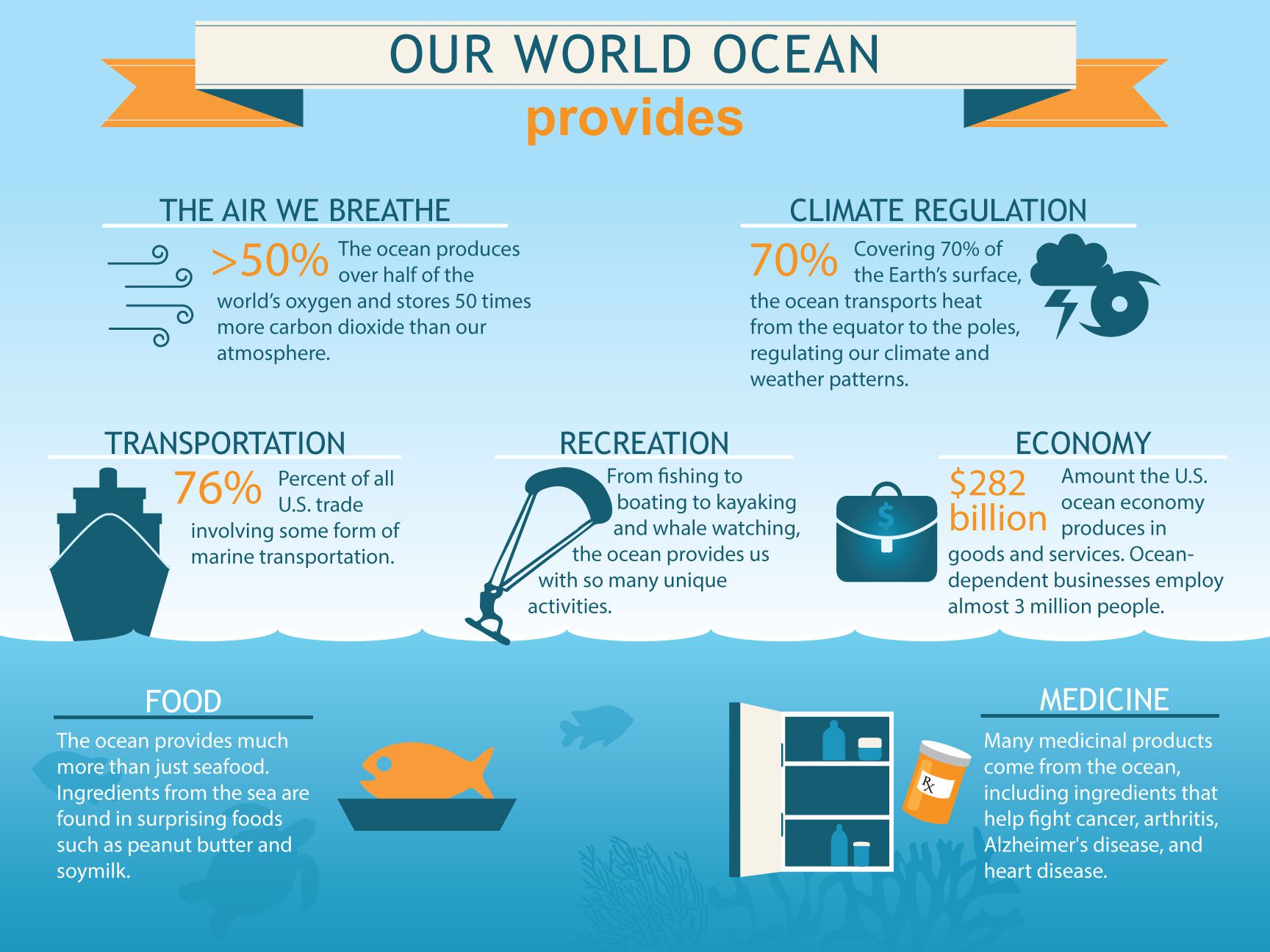This article explores 10 fascinating facts about the world’s oceans. With oceans covering about 71% of the Earth’s surface, they play a crucial role in regulating weather patterns, absorbing carbon dioxide, and providing a habitat for thousands of marine species. The article highlights interesting facts such as the Pacific Ocean being the largest ocean in the world, while the Atlantic Ocean is getting wider every year. The article also mentions how the Southern Ocean is the youngest ocean in the world, having formed only 30 million years ago. The article concludes by emphasizing the importance of understanding the world’s oceans and working towards preserving them for future generations.
10 Fascinating Facts about the World’s Oceans
Oceans cover about 71% of the Earth’s surface and they are essential to life on our planet. They play a critical role in regulating weather patterns, absorbing carbon dioxide, and providing a habitat for thousands of marine species. In this article, we will explore 10 fascinating facts about the world’s oceans.
1. The Pacific Ocean is the largest ocean in the world
The Pacific Ocean covers an area of about 63.8 million square miles, which is larger than all of the Earth’s landmasses combined. It is also the deepest ocean with an average depth of 12,080 feet.
2. The Atlantic Ocean is getting wider
The Atlantic Ocean is getting about 1 inch wider every year due to spreading of the Mid-Atlantic Ridge, a divergent tectonic boundary that runs down the center of the ocean. This process is causing Europe and North America to drift further apart.
3. The Indian Ocean has the biggest waves
The Indian Ocean has some of the biggest waves in the world, with some reaching heights of up to 100 feet. This is due to the strong monsoon winds that blow across the ocean during certain times of the year.
4. The Southern Ocean is the youngest ocean
The Southern Ocean is the youngest ocean in the world, having formed only 30 million years ago. It was created when Antarctica separated from South America and Australia, and circumpolar currents formed around the continent.
5. The Arctic Ocean is covered with ice
The Arctic Ocean is covered with ice for most of the year, and its ice cover can expand to cover an area of up to 14.5 million square miles during the winter months. The Arctic sea ice has been shrinking in recent years due to global warming.
6. The Mediterranean Sea is becoming saltier
The Mediterranean Sea is becoming saltier every year due to evaporation and low rainfall. It is one of the saltiest seas in the world, with a salinity level that is higher than the average ocean.
7. The Dead Sea is the saltiest body of water in the world
The Dead Sea, located between Jordan and Israel, is the saltiest body of water in the world, with a salt content that is 10 times higher than the average ocean. This high salt content makes it impossible for most organisms to survive in its waters.
8. The Red Sea has unique coral reefs
The Red Sea is home to some of the world’s most unique coral reefs, with over 1,200 species of fish and 250 species of coral. It is also one of the warmest seas in the world, with an average temperature of about 80 degrees Fahrenheit.
9. The Baltic Sea is the largest brackish water system in the world
The Baltic Sea is the largest brackish water system in the world, meaning that it has a mix of saltwater and freshwater. It is also one of the most polluted seas in the world due to agricultural and industrial runoff.
10. The Great Barrier Reef is the largest living structure on Earth
The Great Barrier Reef, located off the coast of Australia, is the largest living structure on Earth, stretching over 1,400 miles. It is home to thousands of species of marine life, including whales, dolphins, and turtles.
Conclusion
Oceans are a vital part of our planet, and they are constantly changing and evolving. From the largest ocean to the saltiest sea, each body of water has its unique features and characteristics. By understanding more about the world’s oceans, we can better appreciate their importance and work towards preserving them for future generations.
